Bluegill (Lepomis macrochirus) - Introduced

A 7-inch adult male bluegill in spawning color.
Identification. Deep-bodied. Mouth small, usually not reaching to leading edge of eye. Pectoral fins long and pointed, about equal to head length. Opercular flap entirely dark in adults, usually short, may be elongated in older adults. Dark spot at base of soft dorsal fin in adults. Anal spines 3. Typically dark brown to olive on back fading to greenish- or bluish-brown on sides to tan or yellowish on belly. Spawning males can be very dark with an orange-red breast and bluish on the jaw and below the opercle (the blue “gill”). Juveniles typically grayish or brownish above and steely blue on the sides. Vertical barring prominent in juveniles and present, but faint, in adults.
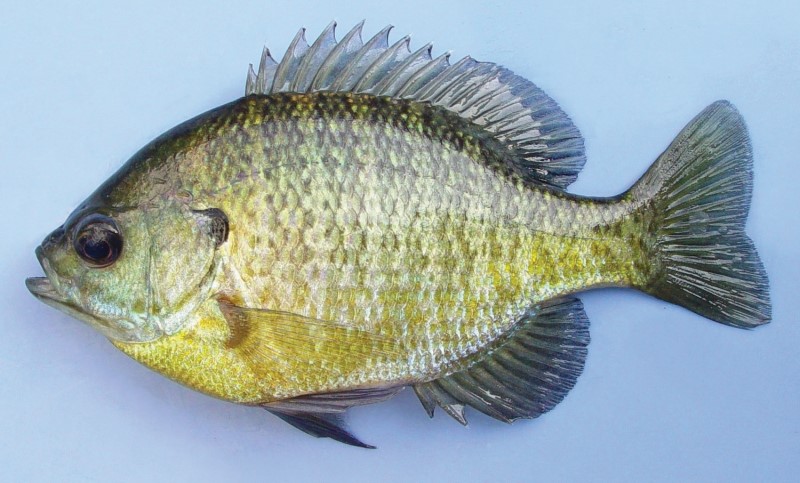
A 6-inch adult female bluegill.
Size. Commonly 4 to 8 inches. State survey max. size 10.2 inches. Conn. State Record 2.3 pounds, 11.8 inches. Max. reported size 16.1 inches. World Record 4.8 pounds.
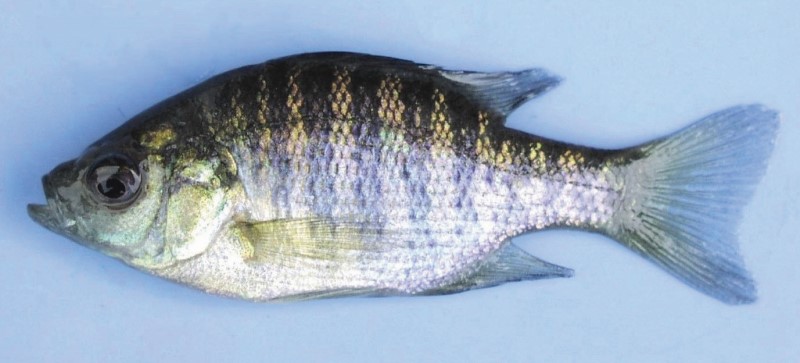
A 2.7-inch juvenile bluegill.
Distribution. Native range includes most of the Eastern United States. They are now found throughout the country. Bluegill are found in almost every water body in Connecticut, where they are typically common to abundant.
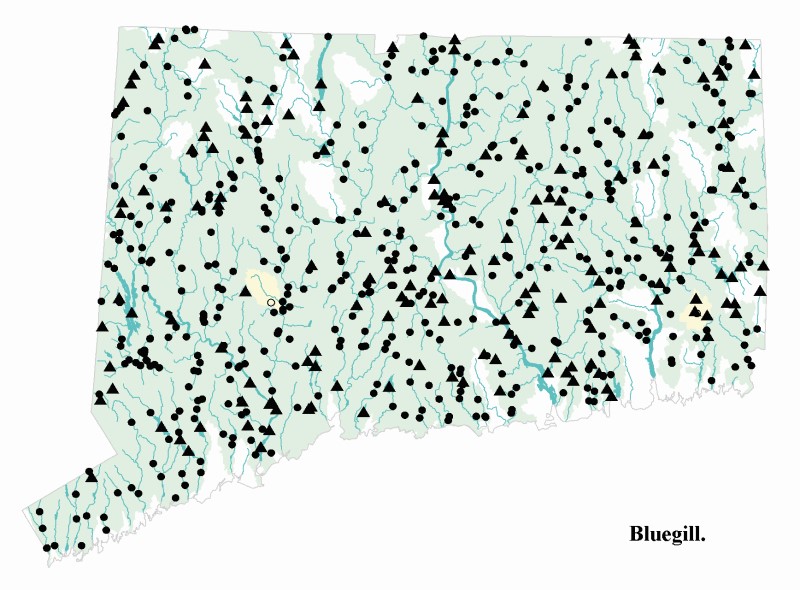
All maps created in 2009. See CT DEEP Fish Community Data for updated distributions.
Habits. Prefer lakes and ponds and slow-moving backwaters of streams and rivers. Typically more abundant in areas with at least moderate amounts of vegetation. May be found in schools or alone. Males build and guard conspicuous nests (circular, hollowed-out depressions) during May-July and often nest in tightly packed colonies of several to many individuals. They prefer to nest in gravel or sandy areas, but may also nest in mud or leaf litter. Bluegills often inhabit shallow areas and are very easy to catch on a variety of small lures or baits (especially worms). Bluegill are very easy to keep in home aquariums. They are tolerant of poor water quality and readily accept dry food. They are relatively aggressive, however.
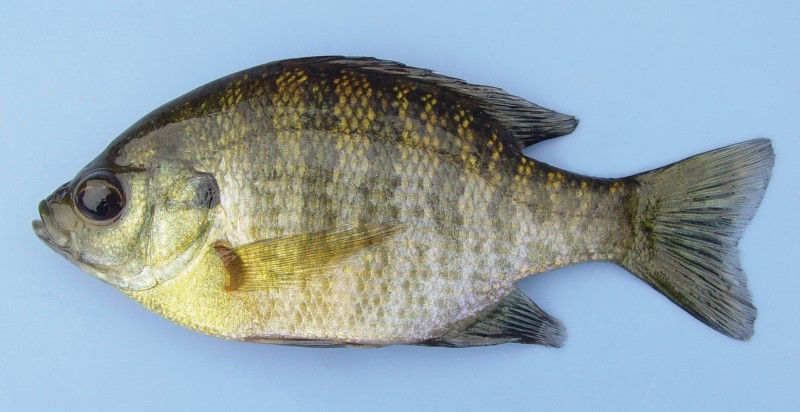
A typical, 5-inch sub-adult bluegill. Note the vertical barring is more conspicuous than in the adults.
Comments. Connecticut bluegill populations have expanded considerably over the past half-century. They were present in only four percent of the lakes and ponds during the 1930s survey, at which time they were considered an “unwise introduction.” Bluegill may now be the most abundant freshwater fish species in Connecticut. They are extremely prolific, more tolerant of a variety of conditions, and typically result in depressed numbers of coexisting sunfish species. Bluegill often hybridize with other sunfish species.
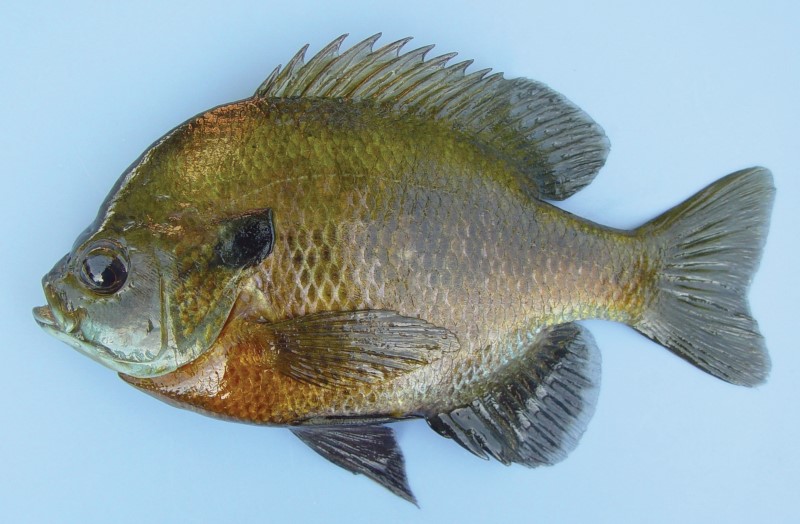
Spawning male bluegills often become very darkly colored.
Text and images adapted from Jacobs, R. P., O'Donnell, E. B., and Connecticut DEEP. (2009). A Pictorial Guide to Freshwater Fishes of Connecticut. Hartford, CT. Available for purchase at the DEEP Store.

